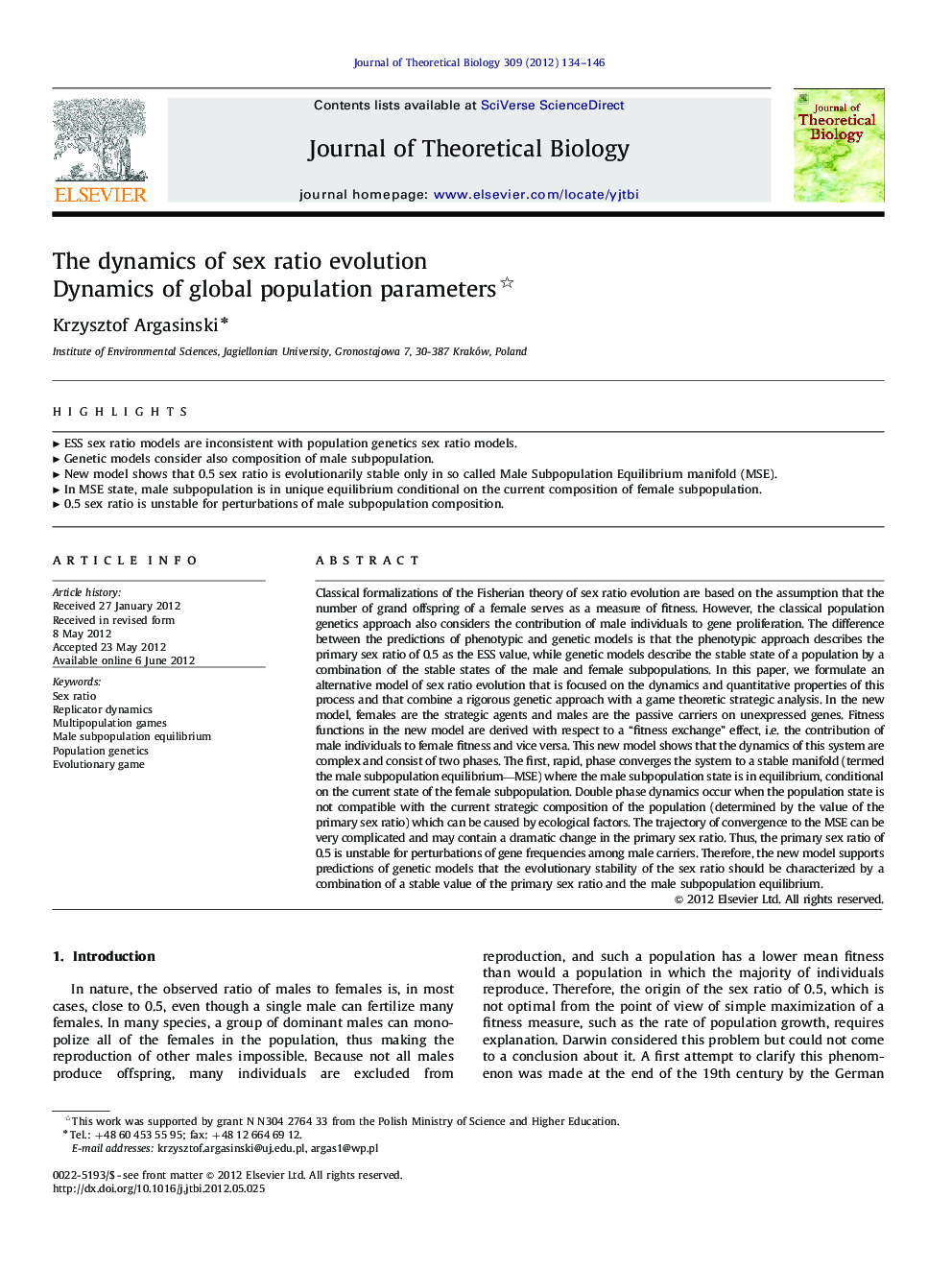| کد مقاله | کد نشریه | سال انتشار | مقاله انگلیسی | نسخه تمام متن |
|---|---|---|---|---|
| 4496617 | 1623901 | 2012 | 13 صفحه PDF | دانلود رایگان |

Classical formalizations of the Fisherian theory of sex ratio evolution are based on the assumption that the number of grand offspring of a female serves as a measure of fitness. However, the classical population genetics approach also considers the contribution of male individuals to gene proliferation. The difference between the predictions of phenotypic and genetic models is that the phenotypic approach describes the primary sex ratio of 0.5 as the ESS value, while genetic models describe the stable state of a population by a combination of the stable states of the male and female subpopulations. In this paper, we formulate an alternative model of sex ratio evolution that is focused on the dynamics and quantitative properties of this process and that combine a rigorous genetic approach with a game theoretic strategic analysis. In the new model, females are the strategic agents and males are the passive carriers on unexpressed genes. Fitness functions in the new model are derived with respect to a “fitness exchange” effect, i.e. the contribution of male individuals to female fitness and vice versa. This new model shows that the dynamics of this system are complex and consist of two phases. The first, rapid, phase converges the system to a stable manifold (termed the male subpopulation equilibrium—MSE) where the male subpopulation state is in equilibrium, conditional on the current state of the female subpopulation. Double phase dynamics occur when the population state is not compatible with the current strategic composition of the population (determined by the value of the primary sex ratio) which can be caused by ecological factors. The trajectory of convergence to the MSE can be very complicated and may contain a dramatic change in the primary sex ratio. Thus, the primary sex ratio of 0.5 is unstable for perturbations of gene frequencies among male carriers. Therefore, the new model supports predictions of genetic models that the evolutionary stability of the sex ratio should be characterized by a combination of a stable value of the primary sex ratio and the male subpopulation equilibrium.
► ESS sex ratio models are inconsistent with population genetics sex ratio models.
► Genetic models consider also composition of male subpopulation.
► New model shows that 0.5 sex ratio is evolutionarily stable only in so called Male Subpopulation Equilibrium manifold (MSE).
► In MSE state, male subpopulation is in unique equilibrium conditional on the current composition of female subpopulation.
► 0.5 sex ratio is unstable for perturbations of male subpopulation composition.
Journal: Journal of Theoretical Biology - Volume 309, 21 September 2012, Pages 134–146